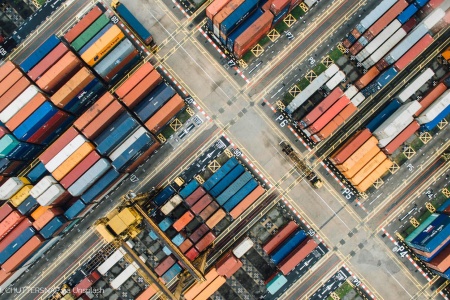
Supply chain: the missing link for corporate climate action
8th Feb 2017
When we started CDP’s supply chain program in 2008, 634 suppliers disclosed climate change information to us for the first time.
Fast forward nearly a decade, and 89 of the world’s largest purchasers – from the public and private sector – are engaging their suppliers through us on climate change, water and, starting in 2017, deforestation. In 2016, 4,366 responded to their customers’ disclosure requests.
With a combined procurement spend of US$2.7 trillion – equivalent to the entire UK economy in 2016 – CDP’s supply chain members are using their purchasing power to drive better environmental performance from their suppliers and create more sustainable supply chains. And we are seeing the results.
Missing link
Our latest report, written in partnership with BSR and the Carbon Trust, revealed emissions savings of 434 million tonnes disclosed by suppliers in 2016. That’s more than the annual emissions of France, and it shows that the supply chain is a critical component – the missing link – in securing our sustainable, low-carbon future.With the Paris Climate Agreement now in force, alongside the framework of the UN Sustainable Development Goals (SDGs), we start 2017 with a powerful common agenda for achieving peace and prosperity on a healthy planet by 2030. To achieve this sustainable, low-carbon future, business needs to scale up its essential role in demonstrating the transformation that is required across the private sector and beyond.
Our data showed that supply chain action isn’t just about reducing emissions, it’s also good for the bottom line. Companies with emissions reduction projects disclosed cost savings of $12.4 billion as a result of their carbon-cutting measures – double what was reported in 2015. Almost half of the top 100 projects by savings were related to energy efficiency, and with a payback period of three years or less, the majority of projects had an attractive investment profile too.
While the savings achieved by suppliers were certainly impressive, around half of the 4,300 companies we surveyed didn’t report any emissions reduction activities at all. So think what the impact could be – on costs and carbon levels – if they all took action?
Cascade effect?
The growth of CDP’s supply chain program shows that more and more organizations are realizing the potential of the supply chain to drive down emissions and save money. But many are facing a serious lack of transparency with nearly half of suppliers – including big brands like Amazon, Caterpillar and LVMH – not responding to their requests for climate and water-related information.
Others are failing to engage with their suppliers in the first place. We found just one in five companies are currently working with their own suppliers to lower carbon emissions, and an even smaller 16% are tackling water use in the supply chain. While some of these businesses are doing great work to lessen the environmental impact of their own operations, supply chains can be responsible for four times a company’s direct emissions and are therefore where the biggest risks and opportunities lie. With the Paris Agreement on climate change now in force and investor and consumer pressure on the rise, it won’t be possible to overlook this critical area for much longer.
Leading the pack
To help improve performance and highlight best practice, for the first time this year we rated companies on how they are managing carbon in their supply chain. Out of over 3,300 companies that were assessed, 29 made CDP’s first supplier engagement leader board – a list that includes car manufacturers, food and beverage companies and financial institutions, from Japan to the Netherlands to Brazil.
In the USA, Hewlett-Packard has helped its suppliers avoid 800,000 tonnes of carbon emissions and save more than US$65 million through energy-saving action plans targeting local efficiency improvements. Other companies leading the way include Brazilian petrochemical company Braskem, which runs targeted workshops to help suppliers identify opportunities to reduce emissions and lower costs, and Royal Philips, which has developed a tool to help suppliers with less experience in disclosure quantify their carbon emissions.
In future years, we’ll be naming the laggards as well as the leaders, in an effort to spur on more widespread supply chain action.
Driving action
The case for sustainable supply chains is plain to see. The global economy’s big buyers now have a clear opportunity to use their spending clout to drive even greater emissions reductions and cascade best practice through the supply chain. They have the potential to deliver the large-scale, rapid change that is needed and lead the way towards our sustainable future. It’s an environmental and business imperative that cannot be ignored.
– Dexter Galvin, Head of Supply Chain, CDP – @GalvinDex
Learn more about how companies can play a critical role in the transition to the low-carbon future by joining the Science Based Targets initiative.
Latest News
View News


